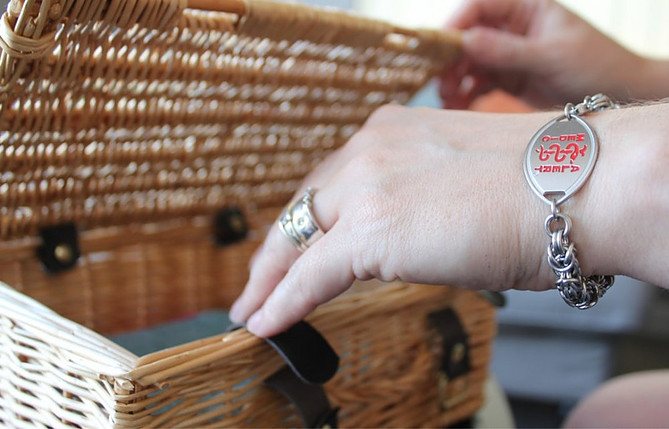People with diabetes are encouraged to use a medical alert bracelet. Some argue this practice is popular among people with only Type 1 Diabetes, while others say it doesn’t matter the type. But, Should a Type 2 Diabetic Wear a Medical Alert Bracelet? Under which circumstances, someone with type 2 diabetes should wear an alert bracelet?
Let’s find out…
Living with a critical health condition like asthma or diabetes can be frightening, as these conditions are life-threatening at later stages, and an attack on health can happen at any time.
Health emergencies are unpredictable and could be detrimental to the health of anyone living with a chronic condition, and therefore, must be immediately attended to.
With the help of a medical Identification tag, the fear of death caused by health emergencies, existent among those living with chronic conditions and their families, been alleviated.
Patients are therefore always advised, immediately after diagnosis, to put on any form of medical identification tags, in view of any future health emergency that could render people with type 2 diabetes unconscious, or unable to speak for themselves.
The medical identification tag could be worn as a clothing or a jewelry like necklace or wrist bands/bracelets, with the latter being more easily accessible to emergency personnel.
What Is A Medical Alert Bracelet?
A medical alert bracelet is a jewelry worn on the wrist to indicate an underlying medical condition. It contains medical information inscribed in it. Among all other medical identification tag, the medical alert bracelet is most easily accessed by emergency teams.
Persons with the following critical conditions wear it.
- Diabetes,
- Epilepsy,
- Asthma,
- Hypertension,
- Kidney disease,
- Alzheimer’s disease,
- Hearing disorder and
- Severe allergies.
These conditions require immediate professional attention, ideally with emergency management skills and facilities. It is also needed to inform the general public about one’s condition and seek assistance when one is unable to speak for himself.
A medical alert bracelet is also referred to as a medical ID bracelet. It gives readable and concise information about the condition or allergies to an emergency team, so as to ease treatment and recovery.
A bracelet could be in stainless steel form, or a sport-like band. Either way, it has four basic components:
- Name of the patient
This is important for taking records of the treatment.
- The health condition
This informs the paramedics and emergency attendance teams on the best approach to treatment.
- Any allergies
This provides information on the allergy and helpful medications to both professionals and non-professionals.
- Emergency contact info
Provides the telephone numbers of people to contact when an emergency occurs.
These 4 components are the most basic and essential information needed for help. For some medical conditions like dementia, characterized by short-term memory, a full home address is included in the medical bracelet too.
How Do Medical Alert Bracelets Work?
The medical alert bracelet is to be always worn by patients with severe health conditions and allergies. However, it is most relevant in times of emergency.
Emergencies could occur while performing simple daily activities, like running or cooking. It could be a severe allergic reaction to a food, plant or animal, or a simple accident. These situations could render one unconscious, and unable to speak for themselves.
Paramedics and medical professional are trained to look out for the medical alert bracelet or other forms of medical data during emergencies.
The best way to identify a medical alert bracelet is the emblem of a medical emergency attached or engraved in it. The emblem is characterized by an image of the rod of Asclepius surrounded by a star called the star of life.
The medical sign can be easily spotted when on the wrist in the alert bracelet, and information easily accessed by the emergency personnel. Accessibility of medical information in the bracelet, is enhanced by making them short, concise and easily readable to the paramedic. The medical alert bracelet thus facilitates treatment, and ensures the best treatment.
The medical alert bracelet is not for all conditions, among the several conditions mandated to wear a medical alert bracelet. People with diabetes warrant the use of the medical alert bracelet too.
Do Type 2 Diabetics Need A Bracelet?
Type 2 diabetes is a condition characterized by high blood sugar level caused by the body’s inability to use sugar gotten from food.
This imbalance in the blood sugar level of type 2 diabetics could be caused by a deficiency in the hormone, insulin, responsible for the usage and storage of ingested sugar. Type 2 diabetes could also result due to poor response of body tissues to the insulin hormone. This is clinically called insulin resistance.
The effect of high sugar in the blood can lead to the destruction of various body organs like the retina of the eyes, the lungs, the kidney and nerves of the body. At a higher extent of the condition, heart failure, neuropathy (loss of nervous sensations), and an increased risk of stroke, can develop if the condition is not properly managed.
Daily monitoring of blood sugar level by dietary routines, and exercises is a good way to maintain the condition. However, due to the vitality of the condition, it is important a person with type 2 diabetes to always play safe with a medical alert bracelet.
The American Diabetes Association (ADA) also advise all its members to always and at all times, put on a medical bracelet. As well as doctors, immediately after a diagnostic will include a medical alert bracelet as part of medications, diabetes care plan and maintenance tips, as it provides essential information to a paramedic about your condition and to what extent it has risen when the diabetic is unconscious, or unable to speak for him/herself.
A medical alert bracelet also provides the medications to be given based on the type of diabetes and how type 2 diabetes has progressed, and additional allergies mentioned in the bracelet.
Types of Type 2 Diabetic Bracelets
There are several designs of the diabetic alert bracelet, as the American Association of Diabetics produces over 600 styles of bracelets. All the different types of diabetic bracelets are aimed at serving their purpose as an emergency ID, and make one look stylish.
Diabetic bracelets are mostly traditional stylish stainless steel, and others are like sport bands. Some diabetic bracelets are waterproof, for those that require to wear them even while showering, and others are not. The design of the bracelet is thus made based on the needs of the bearer.
The following are a few common types of type 2 diabetes bracelet:
- Stainless Steel Classic Bracelet
It’s a class and basic bracelet style. It is entirely stainless steel, with a curved plate-which contain the emergency emblem engraved in its anterior and the medical information of the bearer, and the chain that bound both ends of the plate around the wrist.
- Stainless Steel Velcro Flex Sport-band
The plate with the engraved information is made of metal. However, this plate is separated from the skin by a nylon barrier, with a Velcro closure. It protects the skin from the chilly feeling of a metal and soaks up the skin’s sweat.
- Queen Elizabeth Medical ID Bracelet
This design is most suited for sophisticated females. It consists of a metal plate for the inscription of the medical information and emergency emblem. It is also made of the beaded strands that connect the ends of the plate around the wrist.
- Stainless Steel Large Silicon Flex
This bracelet is good for diabetic patients with several relevant emergency health information to be inscribed, as the bracelet consists of a large plate.
This plate is wound around the wrist by a silicon flexible and durable silicon band.
Being water and sweat proof, it is preferred to be worn during sporting activities. Its silicon band can as well be interchanged, as it comes with extra bands.
- Stainless Steel Small Leather Flex Bracelet
This is a small alert bracelet with a metallic plate for the emergency tag and medical information, clamped around the hand with a thin leather belt. It provides a casual and fashionable look for both genders.
- Electronic Alert Bracelet
Some medical alert bracelet like the CARExcel medical history bracelet has electronic devices that connect a paramedic to e-info of the patient.
One of such electronic devices is a USB flash drive or a microchip. The advantage of this bracelet is its potential to carry more information. It could give the medical history of the diabetic, several emergency contact info and even the personal doctor of the diabetic patient.
When Do Diabetics Need A Bracelet?
Type 2 diabetic patients can come down with symptoms like blurred vision, or become unconscious due to increased thirst or hunger. In an emergency on health as these, the paramedic needs to be aware of the condition, the type and the extent to which it has extended for the effectiveness of treatment.
A person with type 2 diabetes with a cardiovascular disease, developed as a result of diabetes, need an alert bracelet at all times, as a heart emergency need quick and immediate help.
Stroke, developed due to the high blood sugar level, affects the brain, thereby affecting speech.
A neuropathic diabetic, due to bleeding from cuts, could pass out. The arrest of such an emergency will be made possible and faster when the paramedic is aware of an underlying condition.
As advised by health practitioners and emergency wardens, all people with diabetics, both type 1 and type 2, need a medical alert bracelet at all times for their own safety and for better rendering of emergency health services.
How to Find A Diabetic Bracelet for Free?
The cost of purchasing a customized diabetic bracelet, has led lots of diabetics and people living with different other conditions to remain unconvinced on the importance of a medical alert bracelet.
There are, however, several ways of getting free diabetic bracelet or at discounted prices.
- From general hospitals
Some hospitals give their patients free alert bracelets as part of medications. Some others provide it for a discounted price. Although, not all hospitals render such services.
- From medical insurance
Medical insurance is meant to cover all cost pertaining to one’s health. The medical alert bracelet can be obtained for free from one’s insurance company with a doctor’s report.
- From Non-governmental foundations
Some organizations and foundations render the service of sponsoring the provision of important health resources to the needy. Contacting those organizations from their local branch can help one get a free diabetic bracelet.
One or either of these ways can obtain for a diabetic, a free alert bracelet, or a discounted one.
Conclusion
With proper maintenance of diabetes by proper dietary routines and daily exercises, medical emergencies could still result. It could be due to a very high spike in blood sugar or a more reduced blood sugar level than normal. Wearing an alert bracelet will keep a person with diabetes covered during emergencies.












